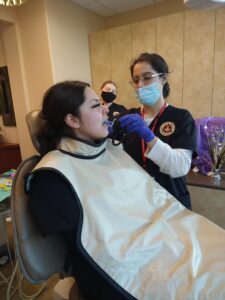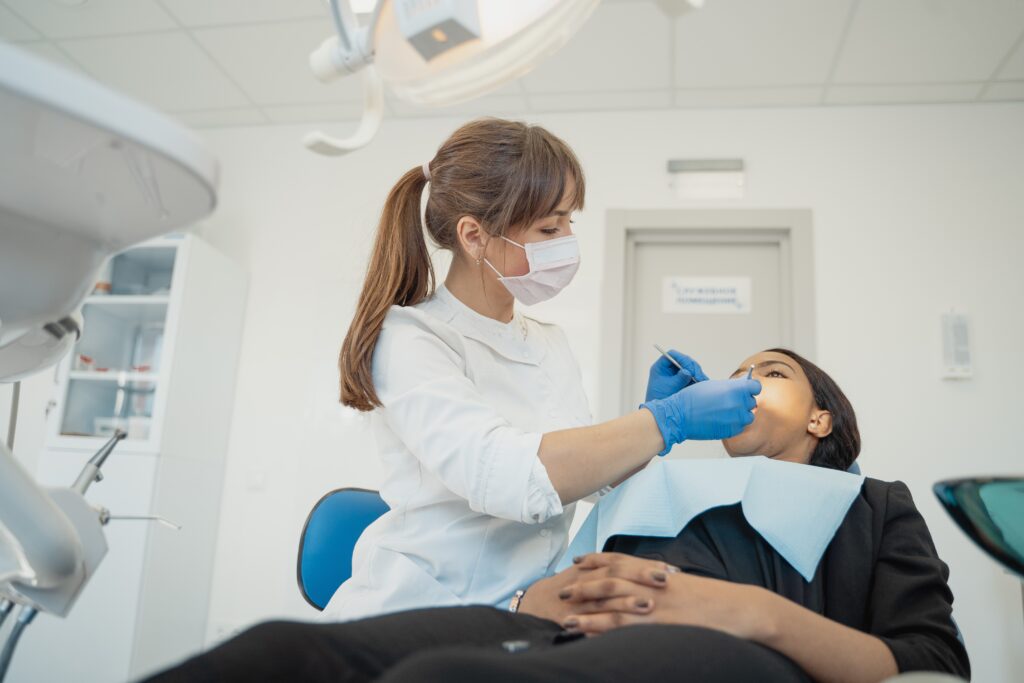Dental Chair Positions Intro
Dental chairs are amazing. First, they are an important tool in dentistry. Most procedures are done using a dental chair. Think about the fact that these chairs have to comfortably accommodate children and adult bodies that come in all different shapes and sizes, both sitting straight and laying vertically. Dental chair positions are important for both the dentist and the patient.
Physical problems may arise if proper positioning is neglected. Three important things that should be taken care of before starting a dental procedure are the following:
- Dental Chair Position.
- Patient Position.
- Operator Position.

Dental Chair Positions
First, having good positioning helps the operator to have good visibility and accessibility of the oral cavity. Secondly, illumination and retraction for visibility are also important. Maintaining proper positioning and posture during treatment will help avoid things like fatigue, strain, and you’ll be less likely to get musculoskeletal disorders.
Here are some helpful tips for dental chairs:
- Make sure there is enough room for the patient to walk to the chair, sit down onto the chair, and get up from the chair comfortably and safely.
- Also make sure that there is enough room for the operator and assistant to be able to maneuver around safely and do their tasks.
Patient Position
To begin, the patient should be seated so that their entire body is supported. Make sure the patient is comfortable. Secondly, the patient’s head should be supported by the headrest. Ask the patient if they feel comfortable or if the headrest needs to be adjusted.
Next, remember to keep the chair height low, and assure the backrest is upright. Once you are sure the patient is comfortable and safely seated you can begin to recline the chair.
Most common patient positions:
- Supine position or almost supine.
- Reclined position or reclined 45 degrees.
- Upright position.
You choose the position based on the operator, type of procedure and area of mouth involved. In the supine position the patients head, knees and feet should be approximately at the same level. Sometimes, depending on the procedure you might have to recline the chair further where the head is below the knees and feet, in a sloping position.
Additionally, always remember to put the chair back to its upright position, let the patient sit for a while to avoid vertigo and then let them rise out of the chair while you are near by and ready to help should they feel lightheaded.
Operating Position
70% of dentists are affected by back pain. One way to avoid this issue is by using proper operating positions. This means using good posture. Unnecessary curvature of the spine or slumping should be avoided.
Good posture means that the back and chest are held upright with the shoulders squared, which promotes breathing and circulation.
When you’re standing, you will need to make sure you are applying even weight distribution to both feet.
It’s hard to explain operating position in further detail and luckily, we don’t have to. Check out the video below to learn more.
Dental Chair Positions Conclusion
We have learned a bit of dental chair positions, but you might have some more questions, luckily for you we have answers. First, at Santa Clarita School of Dental Assisting we are constantly creating content to try and answer some of your most asked questions. We encourage you to check out our website and blog for more information.
If you are interested in becoming a dental assistant and are nearby, then we would love for you to take a tour of our school. Below is a video of one of our classes in which the students learned about the dental chair. Check it out. Follow us on Instagram and YouTube to get a better understanding of our school and our 12-week course.
